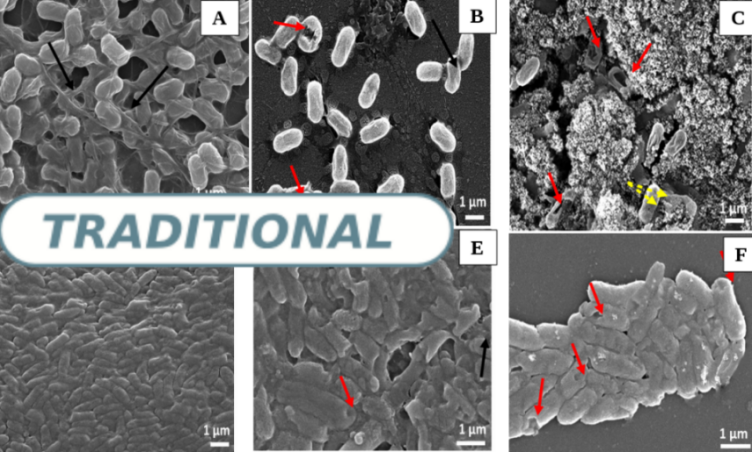The impact of titanium oxide nanoparticles and low direct electric current on biofilm dispersal of $Bacillus~cereus$ and $Pseudomonas~aeruginosa$: A comparative study
DOI:
https://doi.org/10.4279/pip.130005Keywords:
Titanium oxide nanoparticles; Direct electric current (DC); Bacillus cereus biofilm; Pseudomonas aeruginosa biofilms; Antimicrobial effect.Abstract
Bacteria growing in biofilms cause a wide range of environmental, industrial and public health risks. Because biofilm bacteria are very resistant to antibiotics, there is an urgent need in medicine and industry to develop new approaches to eliminating bacterial biofilms. One strategy for controlling these biofilms is to generate an antibiofilm substance locally at the attachment surface. Direct electric current (DC) and nanoparticles (NPs) of metal oxides have outstanding antimicrobial properties. In this study we evaluated the effect of titanium oxide nanoparticle (TiO$_2$-NP) concentrations from 5 to 160 $\mu$g/mL on Bacillus cereus and Pseudomonas aeruginosa biofilms, and compared this with the effect of a 9 V, 6 mA DC electric field for 5, 10 and 15 min. TiO$_2$-NPs were characterized using transmission and scanning electron microscopes, X-ray diffraction and FTIR. They exhibited an average size of 22-34 nm. The TiO$_2$-NP concentrations that attained LD50 were $104 \pm 4$ $\mu$g/mL and $63 \pm 3$ $\mu$g/mL for B. cereus and P. aeruginosa, respectively. The eradication percentages obtained by DC at 5, 10, and 15 min exposure were 21%, 29%, and 33% respectively for B. cereus and 30%, 39%, and 44% respectively for P. aeruginosa. Biofilm disintegration was verified by exopolysaccharide, protein content and cell surface hydrophobicity assessment, as well as scanning electron microscopy. These data were correlated with the reactive oxygen species produced. The results indicated that both DC and TiO$_2$-NPs have a lethal effect on these bacterial biofilms, and that the DC conditions used affect the biofilms in a similar way to TiO$_2$-NPs at concentrations of 20-40 $\mu$g/mL.

Downloads
Published
How to Cite
Issue
Section
License
Copyright (c) 2021 Mamdouh M. Shawki, Marwa M. Eltarahony, Maisa E. Moustafa

This work is licensed under a Creative Commons Attribution 4.0 International License.
Authors agree to the PIP Copyleft Notice













